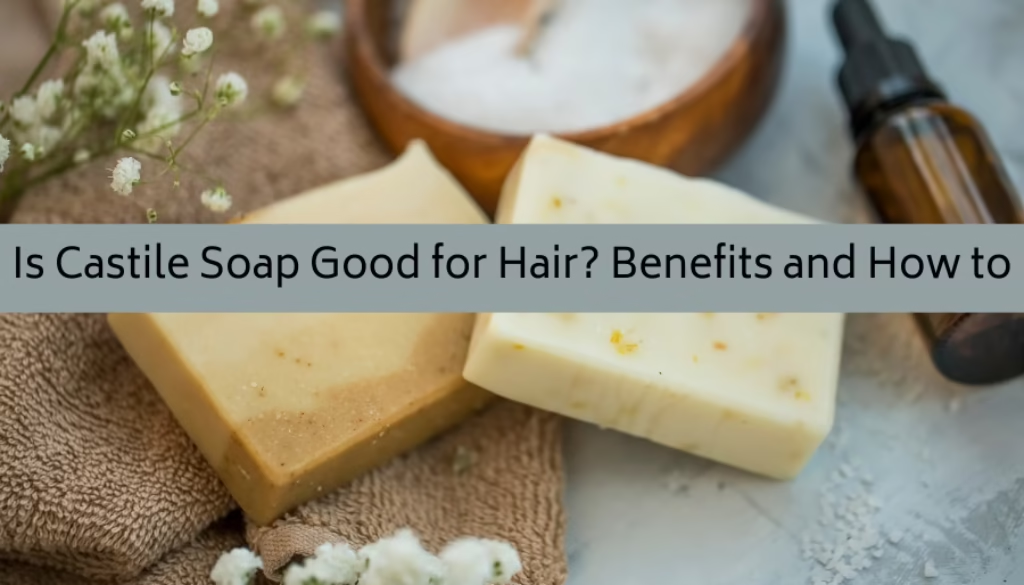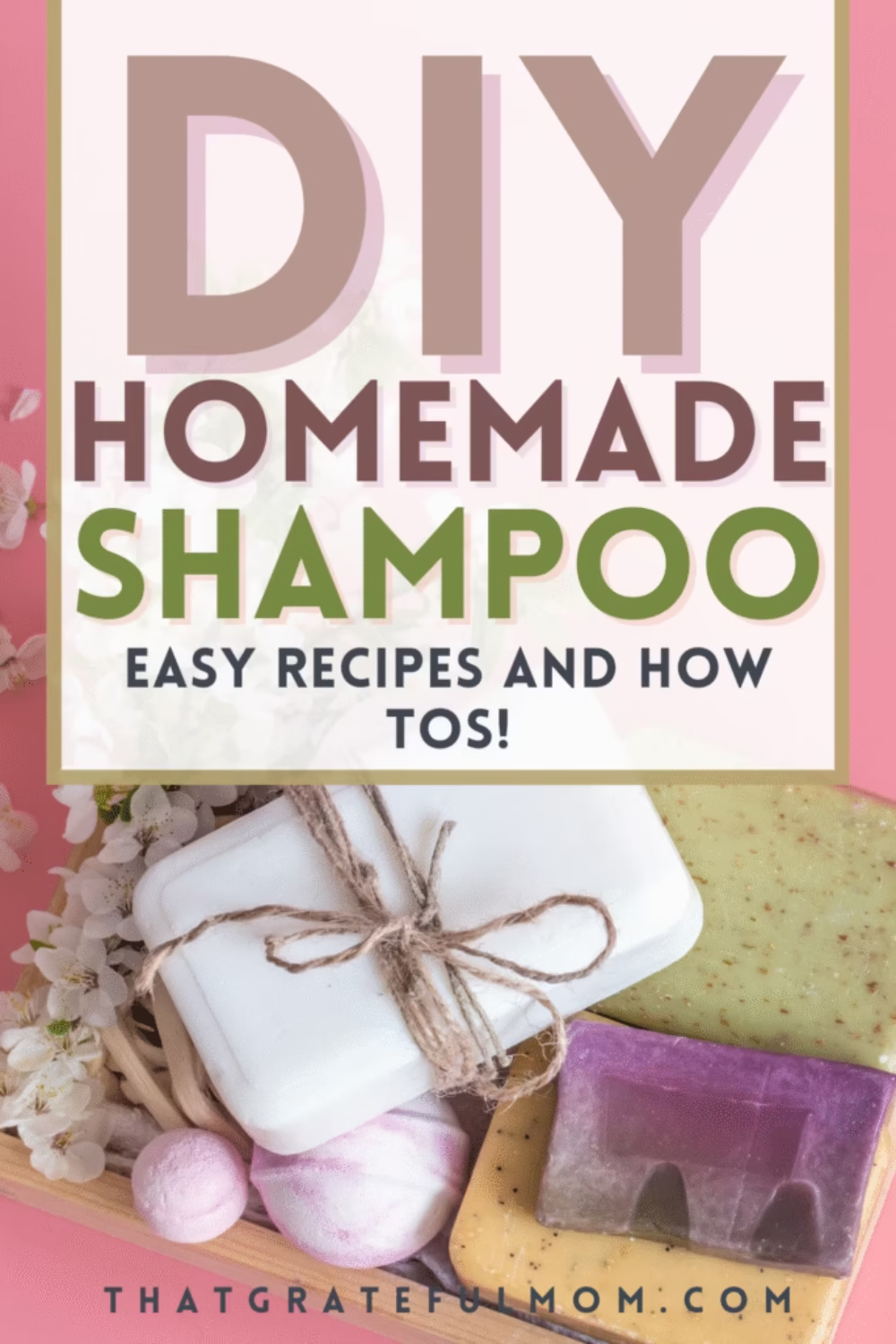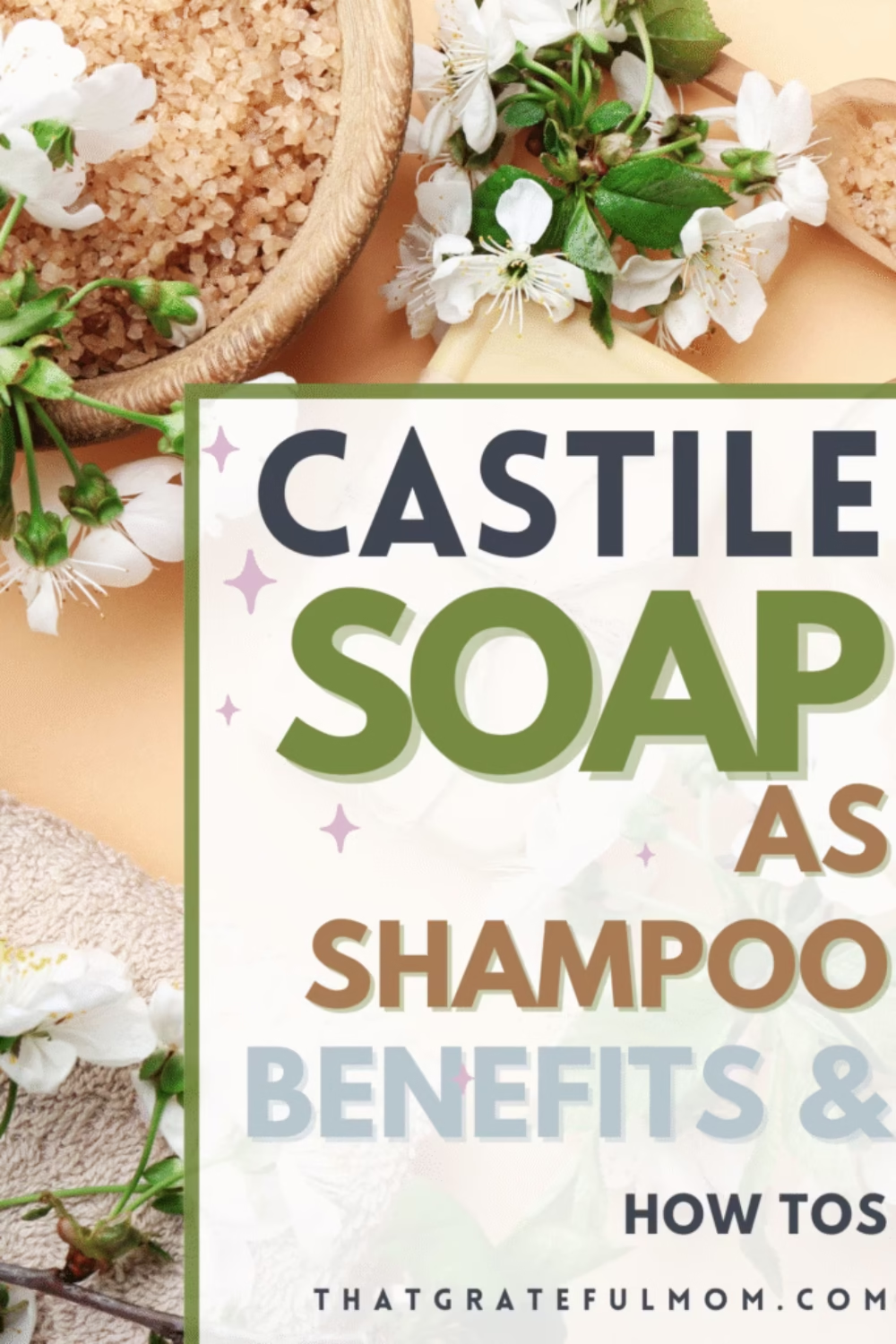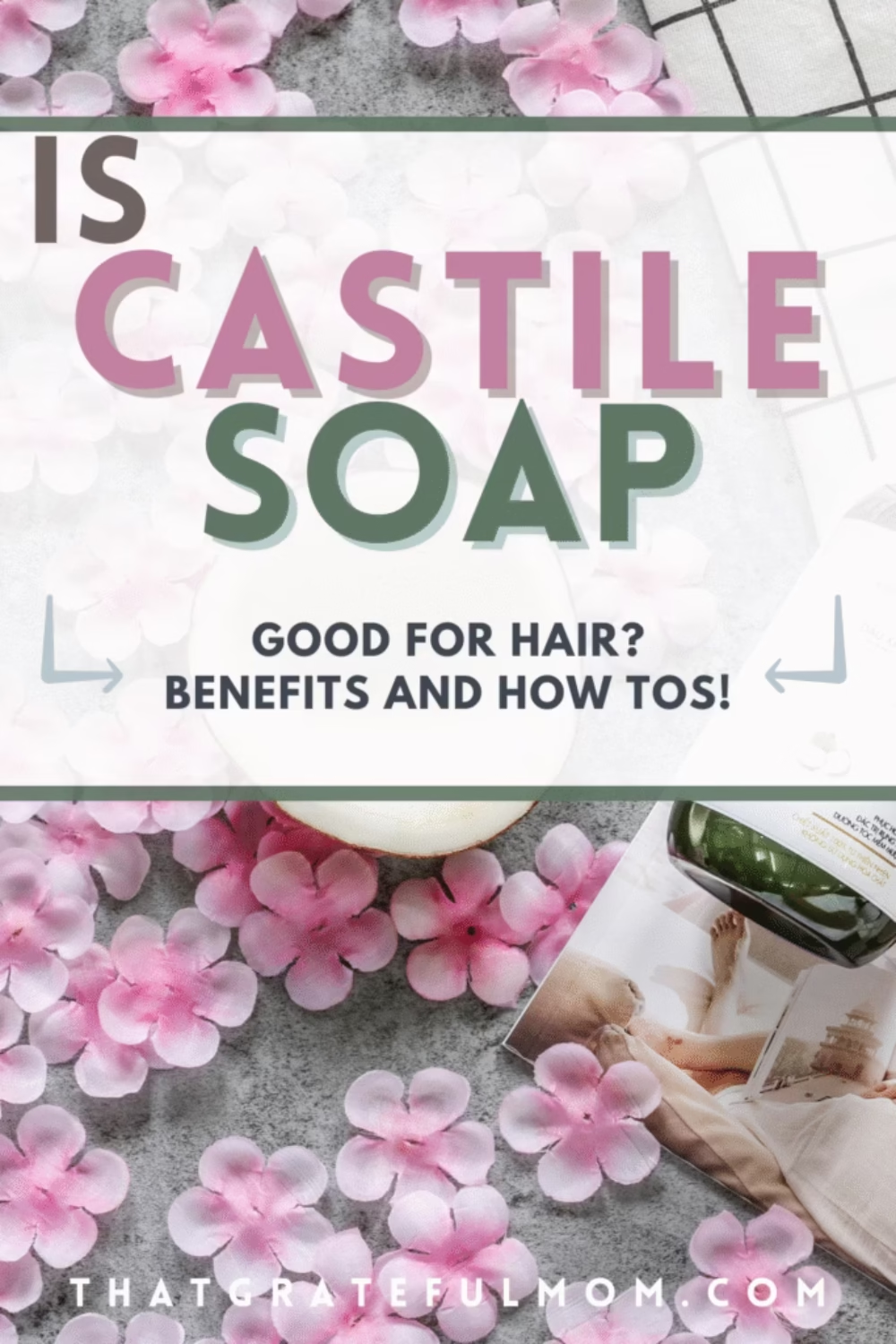Is Castile Soap Good for Hair? Benefits and How to
If you’re looking for ways to stretch your dollar and still use natural products, you might’ve asked yourself, ‘is castile soap good for hair?’ Many people looking for a natural shampoo alternative have turned to castile soap, especially liquid castile soap from brands like Dr. Bronner’s. While it might seem tempting since castile soap is so affordable, you’ll want to learn more before testing it out for yourself. In this post, you’ll learn how castile soap works on hair, whether it can replace conventional shampoo, and how to use it for your hair type. I’ll also share DIY recipes and tips for getting the best results, no matter your hair’s texture or condition.
What Is Castile Soap
Castile soap is a vegetable-based soap that originally came from the Castile region of Spain. Traditionally made with pure olive oil, today’s castile soaps often include other plant-based oils like coconut oil, almond oil, hemp oils, and jojoba oil. Unlike traditional soaps that contain animal fats or synthetic ingredients, castile soap is made without animal products and is biodegradable.
Dr. Bronner’s castile soap is one of the most popular liquid castile soap brands, but there are quite a few brands available. My favorite liquid soap is WholeNaturals, and I use Kirk’s bar soap for other cleaning tasks. Castile soap is concentrated, made with natural ingredients, and comes in both scented and unscented varieties. It can be used as a body wash, face wash, shampoo, and it’s a popular ingredient in homemade laundry detergent. It’s made with natural ingredients and is one of my favorite floor cleaners, but is castile soap good for hair?
Using castile soap as shampoo definitely has its perks. It’s gentle, non-irritating, and can be really hydrating for both your scalp and your hair when used the right way. Plus, it’s biodegradable and super versatile, which I love. This isn’t just a one-trick product; it can be used all over your beauty routine.
If it doesn’t end up working for your hair, don’t toss it. You can use castile soap as hand soap, body wash, face cleanser, makeup brush cleaner, even as a natural shaving cream or gentle makeup remover. Some people even use it as a DIY mouthwash or toothpaste, though that one’s not for everyone.
While there are a ton of ways to use castile soap, many people love it as a natural shampoo. Just know that it might take a little trial and error to find the right dilution and routine for your hair type. It’s not a one-size-fits-all solution, but once you get it dialed in, it could be a great option for your personal care routine!
Why Consider Castile Soap for Hair
I didn’t switch to castile soap overnight. Like most changes in my routine, it started with curiosity and a little research. I was looking for a way to clean my hair without all the harsh ingredients I couldn’t even pronounce. My scalp was constantly dry and itchy, and my hair felt weighed down, like it never fully rinsed clean no matter how often I washed it.
That’s when I came across castile soap. It’s made from simple, plant-based ingredients like olive oil or coconut oil, and it doesn’t contain any sulfates, parabens, or synthetic fragrances. I loved that I could dilute it and mix in nourishing add-ins like jojoba oil or essential oils, depending on what my hair needed that week. And it wasn’t just about my hair, this one soap could be used for my face, my body, even cleaning my makeup brushes.
It took a little experimenting, but I found that once I got the dilution right and paired it with a good rinse afterward, making my own shampoo was a lot of fun! While I don’t use castile soap as shampoo regularly, it gave my scalp a much-needed reset. And since I’m always looking for ways to simplify and swap out store-bought products for more natural ones, this felt like a win across the board.
If you’re thinking about trying it too, just know it’s not always a one-and-done fix. Everyone’s hair is different, and it may take a bit of trial and error. But if you’re aiming for a more natural routine, this is a great place to start.
Benefits for Different Hair Types
As you probably know, like different skin types, different hair types will have varying hydration needs. It’s important to take this into consideration when trying castile soap as shampoo.
Oily Hair
Castile soap is effective at removing sebum from the scalp. For oily hair, try diluting one tablespoon of soap in a cup of water. Follow it with an acidic rinse like apple cider vinegar or lemon juice to help close the hair cuticle and restore pH balance.
Dry or Fine Hair
If you have dry hair or fine strands, use less soap and consider adding moisturizing ingredients. Mix a teaspoon of castile soap in a cup of water, and add a few drops of coconut oil or almond oil. You can also mix in aloe vera or coconut milk for added hydration.
Color-Treated Hair
Castile soap has a high pH, which can fade hair dye over time. If you use it on color-treated hair, follow immediately with an acidic rinse. Mix a tablespoon of apple cider vinegar into a cup of water and pour it over your hair after rinsing the soap out.
It’s important to know that castile soap is not a straight swap for conventional shampoo. It has a higher pH, which means it opens up the hair cuticle. That can lead to dryness or frizz if you don’t follow it with an acidic rinse. It also doesn’t lather the way you might be used to, and that can be a little weird at first.
I recommend easing into it. Start by using it once or twice a week, and see how your hair responds. I’ll share my exact recipe below, but the biggest tip I can give you is to always follow with a simple rinse. Apple cider vinegar or lemon juice diluted in water works great.
How to Use Castile Soap as Shampoo
Basic Method
Mix 1 to 2 tablespoons of liquid castile soap into 1 cup of warm water.
Pour it into a spray bottle or squeeze bottle.
Apply it to wet hair, massage into your scalp, and rinse well.
Follow with an acidic rinse or moisturizing conditioner.
Add-Ins to Boost Benefits
Essential oils like lavender, rosemary, or tea tree oil for scalp health
Jojoba oil or almond oil for dry hair
Coconut milk or aloe vera for hydration
Lemon juice or ACV rinse to balance pH
Castile Bar Soap vs Liquid Soap
Both versions are made using the same basic soap-making process, but bar soaps tend to have a shorter shelf life once exposed to air and water. They may also be harder to lather, especially in hard water conditions. Liquid castile soap is easier to dilute and apply, which makes it ideal for shampoo use.
Some people enjoy shampoo bars for travel or zero-waste goals, but if you’re just starting out, liquid form is more user-friendly. I use castile bar soap in my homemade laundry detergent recipe as it helps break down dirt without creating too many suds for the washer.
Addressing Concerns: pH, Soap Scum, and Hard Water
One drawback of castile soap is its high pH. I mentioned this earlier, but hair is slightly acidic, and soap is alkaline. This mismatch can cause hair cuticles to stay open, which may lead to dryness, frizz, or dullness. That’s why an acidic rinse, like diluted apple cider vinegar or lemon juice, is key!
If you have hard water, which a lot of tap water in the US is hard, you may also experience some product buildup. This can leave your hair feeling sticky or coated. To reduce this, try using filtered water to mix your shampoo or follow up with a strong rinse.
DIY Shampoo Recipes
Basic Castile Shampoo
1 cup water
2 tablespoons liquid castile soap
1 teaspoon jojoba oil
10 drops essential oil
Moisturizing Shampoo for Dry Hair
1 cup water
2 tablespoons castile soap
1 teaspoon coconut milk
1 teaspoon almond oil
1/2 teaspoon aloe vera
Clarifying Shampoo for Oily Hair
1 cup water
1 tablespoon castile soap
Follow with 1 tablespoon ACV in 1 cup water as a rinse
When Castile Soap Might Not Be Right
Not everyone’s hair responds well to castile soap, but that’s okay! If you find using castile soap on your own homemade shampoo, there are plenty of other uses. Here are a few reasons It may not be a good option for you:
You have very color-treated or bleached hair
Your hair is naturally dry or coarse and doesn’t respond well to higher pH
You don’t want to deal with the adjustment period (which can take a few weeks)
You have scalp conditions and haven’t checked with a healthcare provider
Other Genius Ways to Use Castile Soap
If you decide that using castile soap for washing hair just isn’t working, don’t throw it out! Here are some other ways to use it up instead:
Hand soap
Body wash
Face cleanser
Shaving cream
Deodorant base
Makeup remover
Makeup brush cleaner
Laundry detergent
Floor cleaner
So even if it’s not your new go-to shampoo, it’s still a great tool to have in your natural living toolkit. We use it so much that I have it on subscription through Amazon so I never have to worry about running out.
FAQ
Is castile soap the same as shampoo?
Not quite. Shampoo is designed with a more balanced pH. Castile soap is alkaline, so it’s important to follow with an acidic rinse.
Will castile soap damage hair color?
It can fade hair dye over time unless you neutralize the pH with an acidic rinse after every wash.
Can castile soap help hair growth?
Indirectly, yes. It can support scalp health by removing buildup and improving circulation when massaged into the scalp.
Is castile soap good for hair?
I think answering this question is dependent on each person. For me, It made my hair dry, stringy, and damaged. I know lots of people who love it, though! Give it a try and see what you think! Just remember that a little goes a long way.
Final Thoughts
Castile soap can be a great natural shampoo, especially for those looking to simplify their hair care routine and reduce exposure to synthetic ingredients. Start slowly, use it no more than two to three times a week, and adjust your formula to your hair’s needs. Don’t skip the rinse step, and consider rotating it with your usual shampoo on wash day while your scalp adjusts.
Keep in mind: your hair may feel different for the first week or two. That’s normal. Stay consistent and listen to your hair!
This site may contain links to affiliate websites including Amazon. I may receive an affiliate commission for any purchases made by you through Amazon or other potential affiliates and no additional cost to you. Thank you for your support.







